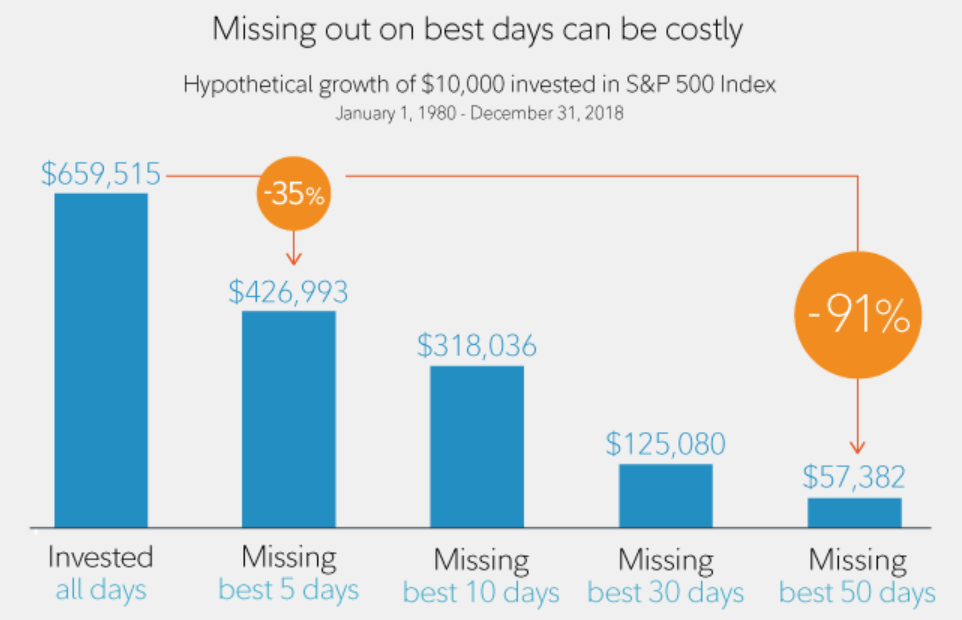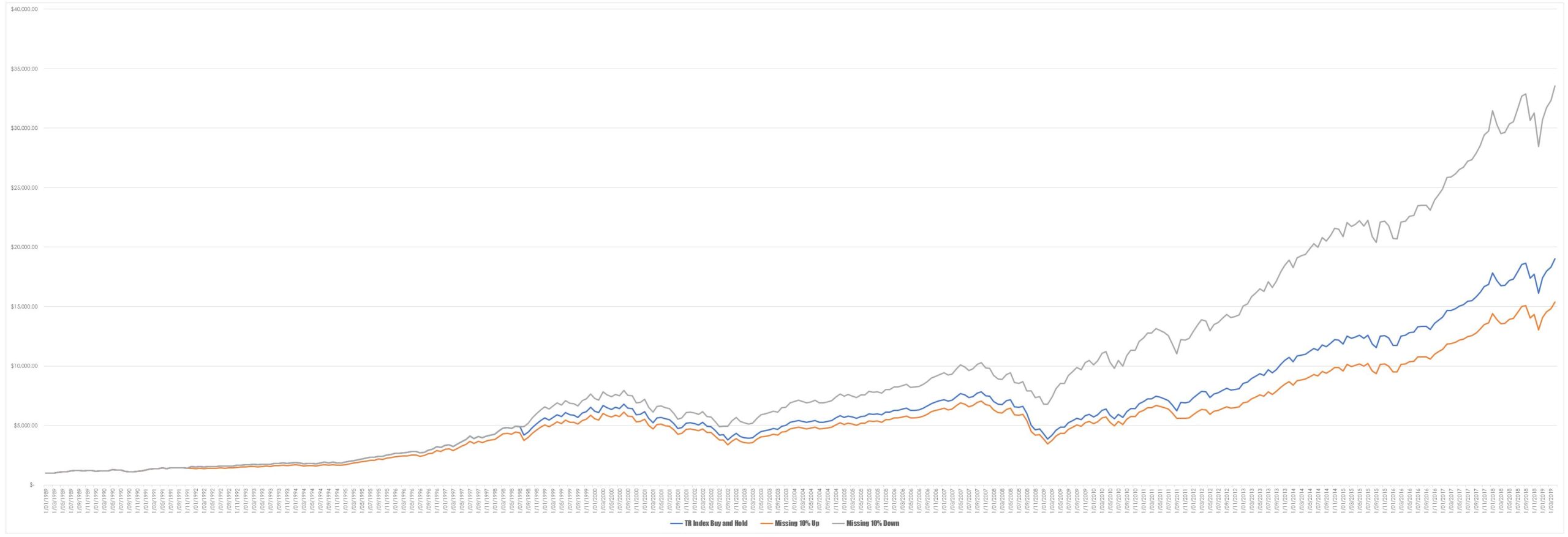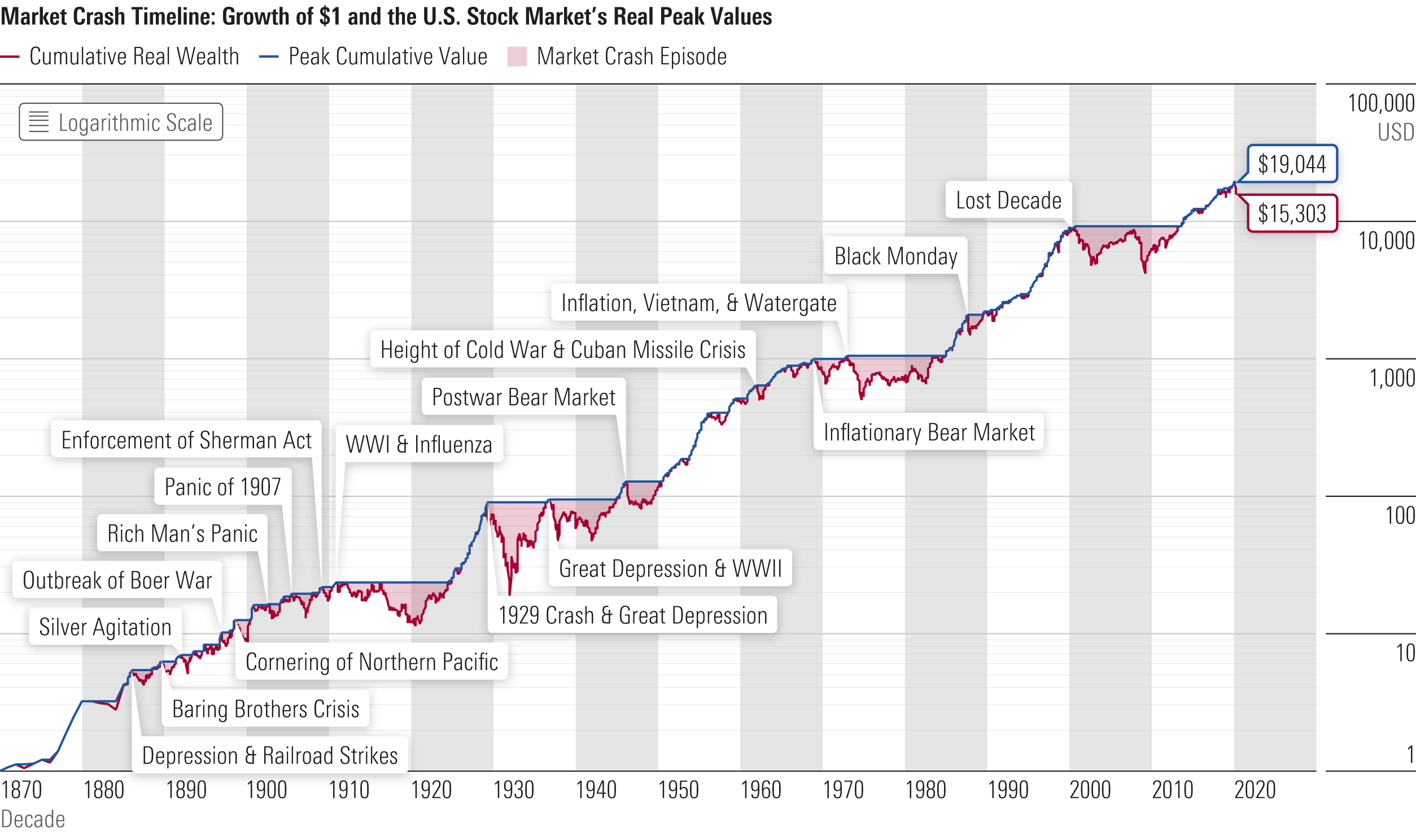Flogging A Dead Horse
One of the things that perpetually surprises me about trading and investing is the amount of absolute and utter rubbish that is spouted by people as if it were fact. The Dunning-Kruger effect is in full swing in market commentary and advice. This is old ground to those of you who are regular readers so if you don’t want me to hear me go off on what volatility actually is, how missing the best days is a nonsense concept and survivor bias best go get yourself a cuppa and do something else. For everyone else here we go.
The offender in question is a piece in Seeking Alpha called 5 Ways To Prepare For The Next Stock Market Crash, unfortunately, it like most of these articles gets a lot of very basic points wrong.
Mistake One – Volatility is not trend.
Volatility is a natural part of investing. Not only should you accept it, but you should also embrace it. The possibility of a market crash should not be a reason to change your strategy, because your strategy should be built assuming market crashes will occur, to begin with.
The assumption here is that volatility is direction and that the moment markets display high volatility they are crashing. This is one of my favourite litmus tests as to whether someone has a basic grasp of the fundamentals of investing and it came about after hearing a presenter at a conference talk about downward volatility. Volatility is not trend is it simply the speed and dispersion of price, it gives you a range of possible points that price may be found in given time period. If the 30-day volatility is 25% it does not mean that prices are going to go up or down 25% in that period. It simply gives effectively a cloud within which price might be found.
Mistake Two – Missing the best days is not that bad.
Those who try to time the market to avoid a red year can easily jeopardize their long-term performance simply by being out of the market at the wrong time. Even missing a few good days out of an entire decade can annihilate most of your returns.
Fidelity crunched the numbers on what would happen to a hypothetical $10,000 investment into an S&P 500 index fund from 1980 to 2018 if you missed a few of the best days:
- By missing the five best days, your returns would shrink by 35%.
- By missing the fifty best days, your returns would shrink by 91%.

This is the old – you must be in the market all the time argument which neglects a simple fact that is not understood by many. If you lose 10% making 10% on your remaining capital will not get you back to your starting point – you need 11.1%, lose 15% you need 20%, lose 20% and you need 25%. This is a curve you cannot catch once it has begun to accelerate.
Missing the worst periods is far more profitable than being in the market for the best periods as shown below in this little thought experiment I did using data from the Dow.

As can be seen, being out of the market during steep declines is more profitable than either being in the market all the time. Missing the best days is an irrelevancy if you have lost 50% of your capital in a downturn.
According to a research note from Bank of America Securities, the average time for the market to get back to where it was after a drawdown of 20% or more is 4.4 years. This is why most advisors recommend to invest in equities only if you intend to hold your investment for the next five years. Even assuming you have a terrible timing and invest right before a bear market, you will still have a good chance to be back in the green after five year
No, you won’t because the assumption here is based upon two very flawed ideas. The notion of average returns and that your stocks have not been completely wiped out. For example, consider the cash of the local banks. Three of the big four are to use a technical term stuffed. If you had purchased these three at their most recent zenith you are now 50% underwater. You require them to gain 100% from where they are now to get you back to your entry point. What the overall market does in terms of meeting its average performance benchmark is irrelevant to you.
Mistake Three – Survivor Bias…..Again
 No matter how bad the crashes have been, the market has always rebounded. It continues to expand to new highs, following closely GDP growth.
No matter how bad the crashes have been, the market has always rebounded. It continues to expand to new highs, following closely GDP growth.
Of course, hindsight is 20/20. You would have had a hard time convincing those who were going through the 79% market drawdown in the crash of 1929 to believe the market would eventually rebound. Many investors who have been through the “lost decade,” with two major crashes of more than 40% back to back in the 2000s, have been disillusioned and probably quit on the market right before it was about to have one of its best decades ever.
There are a few things that need to be discussed with this chart since it is always rolled out in this sort of discussion. The argument is basically this – it doesn’t matter what happens the market always goes up so you will be ok in the long run. Note, there is a trick in the language here, a verbal sleight of hand. People who use this argument talk about the market always going up but to demonstrate this they use a chart of an index. The two are not the same. In this instance, the Dow Jones Index is used to make the argument that if you had invested $1 in the Dow in 1870 it would be worth around $15,000.
The table below contains the 12 original Dow components and when they were dropped from the index – for many it was a short stay.

Whilst I have not gone to the trouble of actually calculating it my guess is that $1 invested into this group of companies would not be worth $15,000 today. Just because a continuously recycled index goes up it does not mean that your stock s will go up or even exist.
The second major issue with these charts is the time scale – people are very poor at understanding scaling in any form and an understanding of time often completely eludes us. If you look closely at the chart you will see there were periods where it took the market decades to get back to its previous high. So even if we accept the validity of the argument the that “market” always recovers you may be long gone before it does.
This raises the question of what is the takeaway message. The answer to that is simple history repeats itself not only in the cycles of the market but also in the misunderstandings that people bring with them when they approach markets. The ignorance that abounds regarding the basics of investing or trading will never go away.






